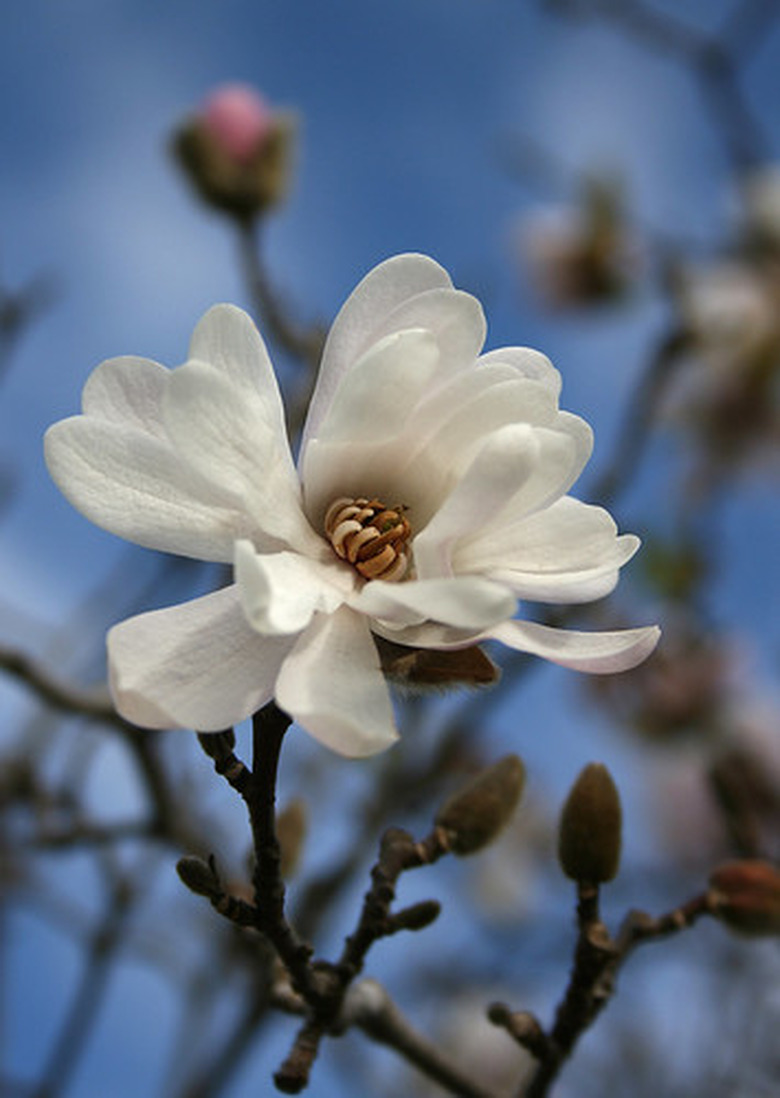Magnolia Tree Leaf Disease
Magnolia trees are evergreen or deciduous plants commonly associated with the American South. Magnolia trees produce showy, aromatic, large flowers in white, red, pink and purple tones. These hardy trees thrive in the United States Department of Agriculture's (USDA) zones 6 to 10, although some magnolia species survive outside of these regions. The magnolia tree is susceptible to several leaf diseases.
Leaf Scorch
Leaf scorch is a magnolia tree leaf disease commonly caused by nutritional deficiencies, lack of root room, chemical injury or drought conditions during dry summer months. Leaf scorch causes the tissues along the leaf margins or along the veins to darken or yellow. Discolored leaves sometimes form dark spots. Severe cases of leaf scorch causes trees to experience twig die-back or premature leaf drop. Magnolia trees typically recover from occasional leaf scorch attacks, but chronic conditions permanently damage the tree.
- Magnolia trees are evergreen or deciduous plants commonly associated with the American South.
- Leaf scorch causes the tissues along the leaf margins or along the veins to darken or yellow.
Micronutrient Chlorosis
Micronutrient chlorisis is caused by a deficiency in zinc, iron or manganese. Magnolia trees planted in alkaline to slightly acidic soils are most susceptible to this disease. The primary symptom of micronutrient chlorisis involves the leaf veins remaining green while the area between the leaf veins yellow. This discoloration might appear on just a few branches or throughout the entire magnolia tree. Severe cases of micronutrient chlorosis causes leaves to turn a very pale yellow and curl.
Powdery Mildew
Powdery mildew is a magnolia tree leaf disease that can be caused by various fungi. The fungal spores initially form small, white spots on the magnolia leaves. These circular spots expand and merge, forming a coating of mildew that looks similar to dust or dirt accumulation. The tissue beneath the fungal growth dies quickly, causing stunted leaf growth and premature leaf drop. Powdery mildew typically affects magnolia trees late in the growing season and during times of high humidity.
- Micronutrient chlorisis is caused by a deficiency in zinc, iron or manganese.
- The primary symptom of micronutrient chlorisis involves the leaf veins remaining green while the area between the leaf veins yellow.
Other Leaf Problems
Magnolia trees often have a ragged appearance in the late spring or early summer months. Tattered leaf conditions are caused when it frosts or freezes while the magnolia buds are first opening. The cold destroys small sections of the developing leaf's cells. As the leaves develop and grow, the frost-killed areas become obvious holes. While the affected magnolia leaves might look tattered and unhealthy the entire growing season, this condition won't permanently damage the tree.
Disease Management
Magnolia tree leaf diseases can typically be controlled with proper care. Magnolias should be planted with enough distance between trees to allow for wind ventilation. Magnolia trees need to be watered only once a week or every other week during dry periods. The soil should be saturated just to a 6-inch depth. Light pruning helps reduce foliage and allows for increased air ventilation. Dying or dead tree branches should be removed and placed into a plastic bag or burned.
- Magnolia trees often have a ragged appearance in the late spring or early summer months.
- As the leaves develop and grow, the frost-killed areas become obvious holes.
